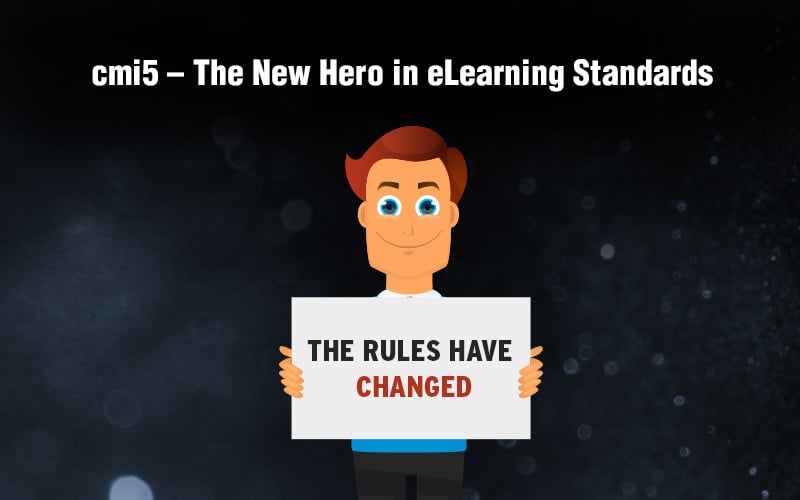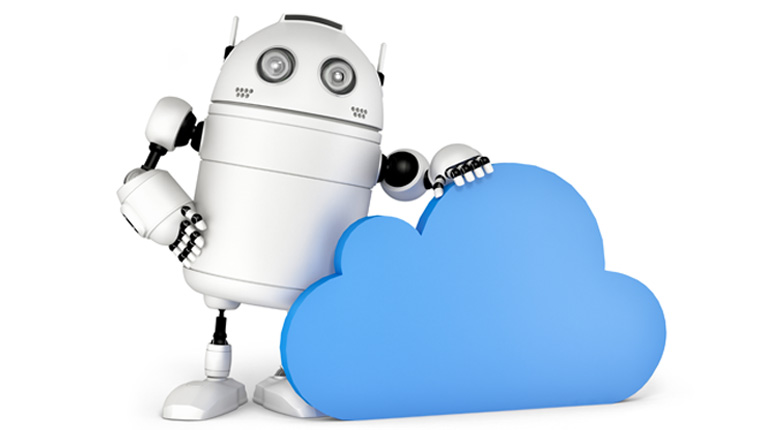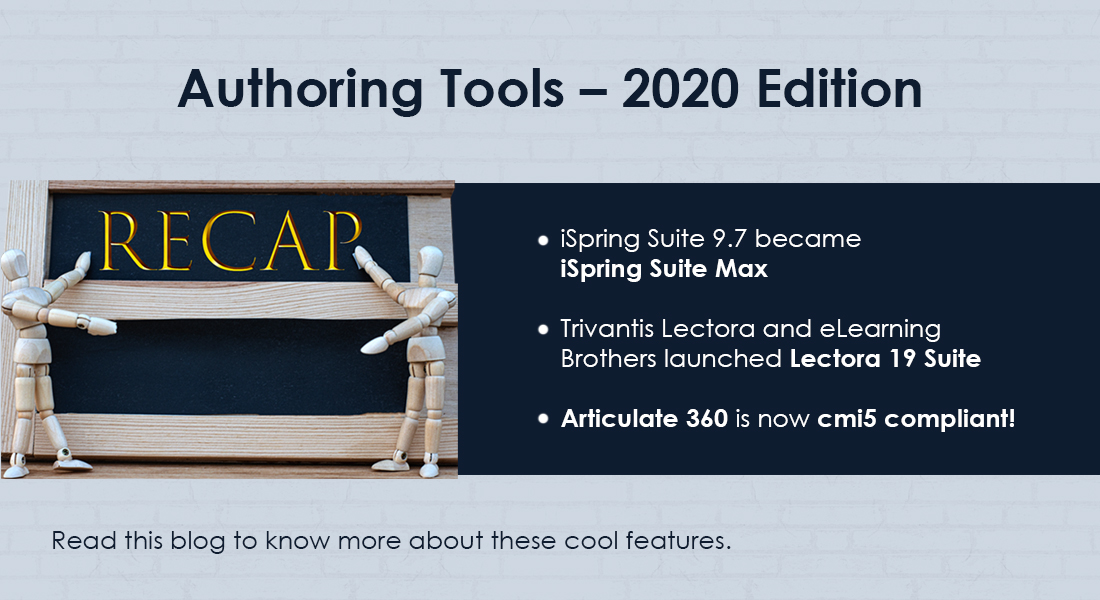The ABC of cmi5 for Beginners

What does ‘cmi5’ mean in the context of eLearning? Does CMI stand for Coded Mark Inversion? Or Content Management Interface? Or Computer Managed Instruction?
That’s right. ‘CMI’ is a broad term that stands for ‘computer managed instruction’. But in the world of SCORM and AICC, it takes a very specific meaning – it is the original AICC specification that provided the data model adopted by SCORM 1.2.
What is cmi5?
cmi5 for Beginners in a Nutshell
cmi5 is the latest addition to eLearning standards and is designed to bridge the gap between SCORM and xAPI. cmi5 supports a supports a course structure that’s similar to that of SCORM. It also leverages xAPI to track learning experiences outside the LMS and provide enhanced support for mobile learning – a feature that’s missing in SCORM.
SCORM 1.2 is the gold standard for eLearning courses today, the eLearning standard that your learning management system (LMS) is most likely compatible with. These standards are guidelines that need to be followed while packaging eLearning content so that it communicates well with the LMS.
eLearning standards have been evolving over the years and cmi5 is the latest one that defines how ‘learning objects’ imported to an LMS can interact with the LMS to track learner progress.
In our blog on SCORM 2004, we promised to share more information on the next generation of SCORM – the cmi5. So here we are, keeping that promise!
What is cmi5?
cmi5 is the latest addition to eLearning standards. Released in 2016, cmi5 is designed to take advantage of xAPI specifications, bridging the gap between SCORM and xAPI.
To be precise, cmi5 is an extra set of rules to leverage the benefits offered by xAPI, and deliver a stable solution that would compensate for the drawbacks of SCORM and xAPI.
What are the Drawbacks of SCORM?
1. Cross-Domain Interactions Aren’t Easy
SCORM works well when the learning content resides in the same domain as the LMS. This is how it is in most organizations. Your eLearning content resides on a webserver and the LMS is installed on the same server or another server on the same domain.
But what if your learners need to access third-party content that resides on the vendor’s server (content in another domain)? Such cross-domain interactions are restricted by the web browser.
This is not to say that SCORM cannot be used in such cases. It can, but it’s not so easy.
Download the definitive guide to eLearning design and the right brain.
2. Implementation is Complicated
Did you know that the specification document for SCORM (for different versions and editions) comes up to 3,152 pages? SCORM support also requires a dedicated team and courses need to be hosted on a reliable SCORM-compliant LMS.
Let’s admit it! Implementing SCORM is complicated!
3. Offline Learning Isn’t Supported
SCORM is not designed to support offline learning. You need an Internet connection and browser to access SCORM courses. However, you can work around it through third-party tools that support offline learning.
For example, the offline SCORM player extension allows SCORM content to be downloaded from your LMS via your mobile app. This can help learners complete courses offline and sync their progress back to the LMS when Internet connection is restored.
4. Vulnerable to Security Threats
SCORM is vulnerable to security threats. It is possible to hack SCORM to set eLearning courses to completion with a score of 100. Surprising, isn’t it?
How is cmi5 Better than SCORM?
1. Content Can Reside on Distributed Networks
With SCORM, content has to reside on the same domain as the LMS. With cmi5, content can be stored on several servers across the globe (if required), and learners should be able to connect to the nearest server to access learning resources.
With SCORM, it is difficult to access content from the service provider’s site (only possible through workarounds). But, with cmi5 there is no such problem. Content can reside anywhere – even on a mobile device outside your domain – and still be accessible. Cmi5 supports the content-as-a-service (Caas) model of delivery.
2. Implementation is Easy
Cmi5 leverages xAPI. So, if you have the capability for xAPI implementation, cmi5 implementation is pretty easy. Unlike SCORM that was designed for browser-based communication, cmi5 is not browser-dependent, offering cross-platform, multi-device, and multi-browser compatibility.
3. Offline Learning is Supported
cmi5 is designed to support offline learning and does not require to be continuously connected to the LMS. Remember, one of the benefits offered by xAPI is that it can track learning experiences in different forms, especially informal ones that take place outside the LMS – such as reading a book, watching a simulation, or learning from peers.
As cmi5 offers all the benefits of xAPI apart from supporting offline learning, it supports mobile learning, collaborative learning, social learning, complex games, simulations, and virtual reality.
4. Offers Secure Data Exchange
In addition to making packaging and uploading courses to an LMS much easier, cmi5 also offers secure data exchange between your LMS and eLearning courses with the ‘handshake’ credentialing process that’s specific to cmi5.
How is cmi5 Different from xAPI?
One of the biggest limitations with SCORM was that it could not track learning outside the LMS. xAPI offered a solution, it could track learning experiences outside the LMS – both online and offline. But then, it was never designed to replace SCORM.
xAPI makes use of a Learning Record Store (LRS) to receive, store, and return xAPI statements. So it does define a communication and storage layer, but it does not take care of communications between the learning content and the LMS. SCORM features such as bookmarking, sequencing, and completion criteria are not available with xAPI.
For example, if your learners read books or watch simulations on a certain topic, it is difficult to measure the impact of that activity on performance improvement. You really don’t know if these activities have helped learners improve their skills or knowledge.
cmi5 takes care of these limitations by integrating a set of rules with xAPI, so that learning content communicates with the LMS. It supports a course structure that’s similar to that of SCORM. It can also store and share content using the LRS and provide enhanced support for mobile learning – a feature that’s missing in SCORM.
Should You Switch to cmi5?
The answer to this question would depend entirely on your training needs. With a SCORM-compliant LMS, you can track data such as:
- Completion status
- Assessment score
- Time taken for course completion
SCORM is limited to a set of data that it can collect. If you want a deeper level of reporting and analytics, you might have to opt for a customized solution.
You can record any data you want with cmi5 and also share it through easy integration with other tools/applications. For example, if your training program requires learners to use their smartphones to record a video on how they complete a specific process and upload that in the LMS as a training record, cmi5 enables easy sharing of this data.
It can also track informal learning experiences that happen outside the LMS – be it through an SME, Google, YouTube, or the company’s intranet – and relay this information to the LMS. cmi5 is a work in progress and is designed to take advantage of both worlds – SCORM and xAPI. It clearly is the eLearning standard of the future and can be used to enable detailed reporting and learning analytics.
Talking about learning analytics, if you’d like to know more about it, download our eBook ‘Learning Analytics 101’.





